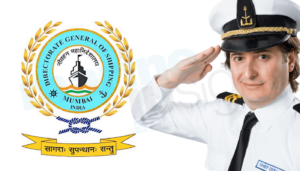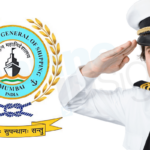16 Things that Can Detain Your Ship During Port State Surveys
A ship survey (inspection) is every maritime professional’s nightmare. Though there are a dozen of guides available on how to sail smoothly through ship surveys, seafarers are often bothered by doubts on overlooked faulty areas on the ship.
In such cases a checklist would definitely help, but not every ship is similar and several problems occur for the “first time”. The only way to learn and master this art is through experience and knowledge.
In this article, we have enumerated those important yet “easily-overlooked” areas which can detain a ship during surveys and inspections. Kindly note that this is not an exhaustive list, but are points we considered extremely important.

1. Faulty Life Boat Engine
Inspection of ship’s safety and its crew is always given the highest priority by surveyors. Life boats are an integral part of ship’s safety. A malfunctioned or faulty life boat engine will definitely detain a ship. It is therefore important that the engine is properly tried, serviced, and tested before the inspection.
Additional important areas of inspection on life boat
- Feasibility of starting of life boat engine by one person
- Condition of chain
- Fuel oil tank inspection
- Propeller test
2. Faulty GMDSS Equipment
Erroneous navigation equipment can lead the ship to extremely unfavorable conditions. If there is a fault with the ship’s GMDSS equipment, the ship will definitely face serious problems during a survey.
Additional important areas of inspection on GMDSS equipment
- Test of reserve energy source (battery)
- Condition of GMDSS to receive necessary data
- Availability of record for MF/HF DSC messages
3. Corrosion/ Holes on Launching Systems and machinery
An easy trick to get rid of all the corrosion on any ship machinery is to paint over it. However, ship surveyors are smart people and they know about all the problems that can occur on a ship.
Launching systems on the deck are easily visible and even easier to inspect. The bottom line is never to conceal a problem on launching systems.
Additional important areas of inspection on launching systems and machinery
- Corroded and disfigured bolts/nuts
- Corrosion on davit and foundation of the machinery
- Excessively painted areas
4. Faulty Emergency Fire Pump
One of the most important safety appliances on board ships, emergency fire pumps are thoroughly checked during every inspections.
While preparing a checklist for maintenance prior to a survey, the emergency fire pump should come in the top five.
Important Areas checked on emergency fire pump during survey
- Capability of the pump to run continuously for more than 5 minutes with maximum pressure
- Capable of supplying at least two jets of water
- Suction and delivery pressure
- Corrosion and gauge glasses
5. Faulty Oily Water Separator (OWS)
Oily water separators have come under the scanners of shipping surveyors post several incidences of deliberate discharge of oil at sea and spate of unfortunate oil spills.
These days OWS are handled and operated only by the chief engineer of the ship, still the equipment remains favourite among ship surveyors for inspection.
Important areas checked on OWS:
- Condition of oil discharge valve
- Condition of three way valve
- Working of bilge alarm
- Working of oil level detectors
- Oil inside the overboard outlet pipe
6. Faulty Fire Damper/Ventilator
Vents and dampers get corroded very easily because of difference in temperature. It is imperative to check them prior to inspection for corrosion and smooth operation of moving parts.
Areas of Fire Dampers and Ventilators most likely to be checked:
- Areas inside the ventilator are checked for corrosion
- Damper condition inside the ventilator
- Operation of moving parts of dampers
- Condition of vent pipes
7. Malfunction of Launching Arrangement
Along with the condition of the launching arrangements, the working condition of the launching systems is also checked. There are several areas that can be checked when it comes to such systems, and therefore ship professionals should take extra care during the maintenance prior to the survey.
Things that are often checked:
- Condition of on load release gear system
- Inspection of block sheave and joint shackles
- Inspection of safety pin and release handle
- Condition of interlock lever
- Release operation
8. Poor Condition of Air Vent Head
Air vent heads are also checked often during surveys, especially those on open decks. Corroded air vent head with holes can detain a ship for sure.
Things that can be checked on air vent head
- Cover tightness of air vents
- Inspection of pipe condition for corrosion and holes
- Inspection of Inside condition after removing the cover
9. Poor Condition of Hatch Coaming Stiffeners
Maritime professionals on ships with hatches should be extremely careful about hatch coaming stiffeners. Faults with hatch coming stiffeners have lead to detaining of ships in the past.
Common things checked are:
- Surface for holes and corrosion
- Thickness and wear down limits after comparing with the original thickness
10. Faulty Hatch Cleat Secure Socket
Along with the hatch coaming stiffeners there are several other factors that are also checked when it comes to ship’s hatches, and the hatch cleat secure socket is one of important ones.
Important things checked about hatch cleat secure socket are:
- Cleat clearance, especially for auto cleat type
- Water tightness of hatch covers
- Condition of rail top and cleat socket
11. Faulty Data in Oil Record Book
In order to keep a track of any kind of spill at the sea, both intentional and unintentional, data of oil record books are often scrutinized not only by the ship owners but also by the surveyors. Any misinformation found in the oil data book can lead to detention of ships.
It is imperative that entries are made in the forms in accordance with the latest requirements. Moreover, any kind of disposal of oil residue at the sea should also be recorded properly in the oil record book.
12. Poor condition of Fire Dampers
Poor condition or improper working of fire dampers has lead to detention of ships in the past. It is therefore necessary that fire dampers are properly checked for working condition.
Things that can be checked:
- Movement of handles
- Marking or sign with the name of the closable compartment along with “open” or “closed” position of the handle
- Condition of closure flaps, if any
- Condition of rubber packing and toggles
- Tightness of flaps
13. Poor condition of electrical equipment and emergency lighting
Hazardous electrical equipment in poor working condition can detain a ship. All electrical equipment, along with emergency lighting should be in safe working condition.
Following thing are often checked
- Condition of wires and switches
- Presence of flying cables or switches
- Covers of lamps and other kinds of lightings
- Working of lights which are supported by emergency power supply
- Condition of emergency supply
14. Poor Engine Room Cleanliness
Though engine room cleanliness is always taken care of prior to a survey, there are areas in the engine room that can be overlooked. It is therefore necessary that engine room of the ship is cleaned thoroughly prior to the inspection.
Things that can be checked
- Oil in engine room
- Oil on engine room floor plates or deck
- Amount of residue in the bilges
- Oil leakage from pipelines or machinery
15. Outdated Charts and Nautical Publications
Outdated charts and nautical publications used on ships will lead to detention of the ship. All charts and nautical publications used for intended voyage should be up-to-date.
Things that can be checked during survey:
- Edition of nautical publications such as tide tables, pilot books, and nautical almanac
- Edition of notice to mariners, IAMSAR documents, and list of lights
- Every nautical document that needs to be updated at regular interval of time
16. Condition of Generators, Auxiliaries, Pipes, and Valves
Generators and auxiliaries are one of the most important parts of the ship. Generators should be in proper working condition and should provide sufficient power. Auxiliaries should also be in up-to-date condition along with proper pipes and valves.
Things that are checked:
- Condition of emergency power supply
- Condition of valves and pipes
- Automatic starting of emergency power supply
- Leakage of pipes and valves
- Proper piping arrangement
- Presence of any illegal or plastic pipes
Do you know any other important yet easily missed areas that should not be neglected during maintenance prior to surveys?
Do you have info to share with us ? Suggest a correction
Latest Maritime law Articles You Would Like:
Latest News
- What is the Purpose of DG Shipping?
- What are Logistics Risks?
- How Port and Terminal Operators Can Control Emissions?
- Minimum Quantity Commitment (MQC) and Liquidated Damages in Container Shipping: Concept and Relevance
- MARPOL (The International Convention for Prevention of Marine Pollution For Ships): The Ultimate Guide
- The Ultimate Shipping Container Dimensions Guide
Subscribe To Our Newsletters
By subscribing, you agree to our Privacy Policy and may receive occasional deal communications; you can unsubscribe anytime.
















All draftmarks and/or loadlines should be checked and repainted if necessary.
Why is air vent heads so important that the society can detain the ship?
Is it critical for the sea safety?
What happens if the air went head don’t work, stuck or ball/disc is gone.. ?
Is protection against leakage into ballast water tanks important
Is leakage into a fuel tanks a relevant problem ?
Are the reliability the most important quality of an air vent check valve? That it works in a critical situation, like a damage situation close to instability for instance?
Is suction blocking a critical problem ?
Is the over /under pressure at the tank during filling /emptying the tank a big problem..
Do you have example of scenarios where a dysfunctional valve cause a serious sea safety situation ?
Hope you can give us a good answer
We need it for developing the sea safety.
Best regards
Bjarne Voldnes
BV Consult AS
http://www.bcvonsult.no
+4790834491
How to get a vessel released after getting detained on a serious structural deficiency?
@Shailesh: As you mentioned, the deficiency is seriois you might need to rectify the issue to get the clearance (it will be required if it is a direct threat to the safety of the ship). However, if the ship can sail ensuring the safety of crew and cargo, the ship management should submit a proof of repair which will be done in a near future (time period may vary from within 1-3 months, subjected to the approval of PSC officer) ensuring the structural damage will be repaired. If a temproary repair can be done without taking the ship out of water, the ship management should arrange the same. All these condition are subjected to approval from the PSC.